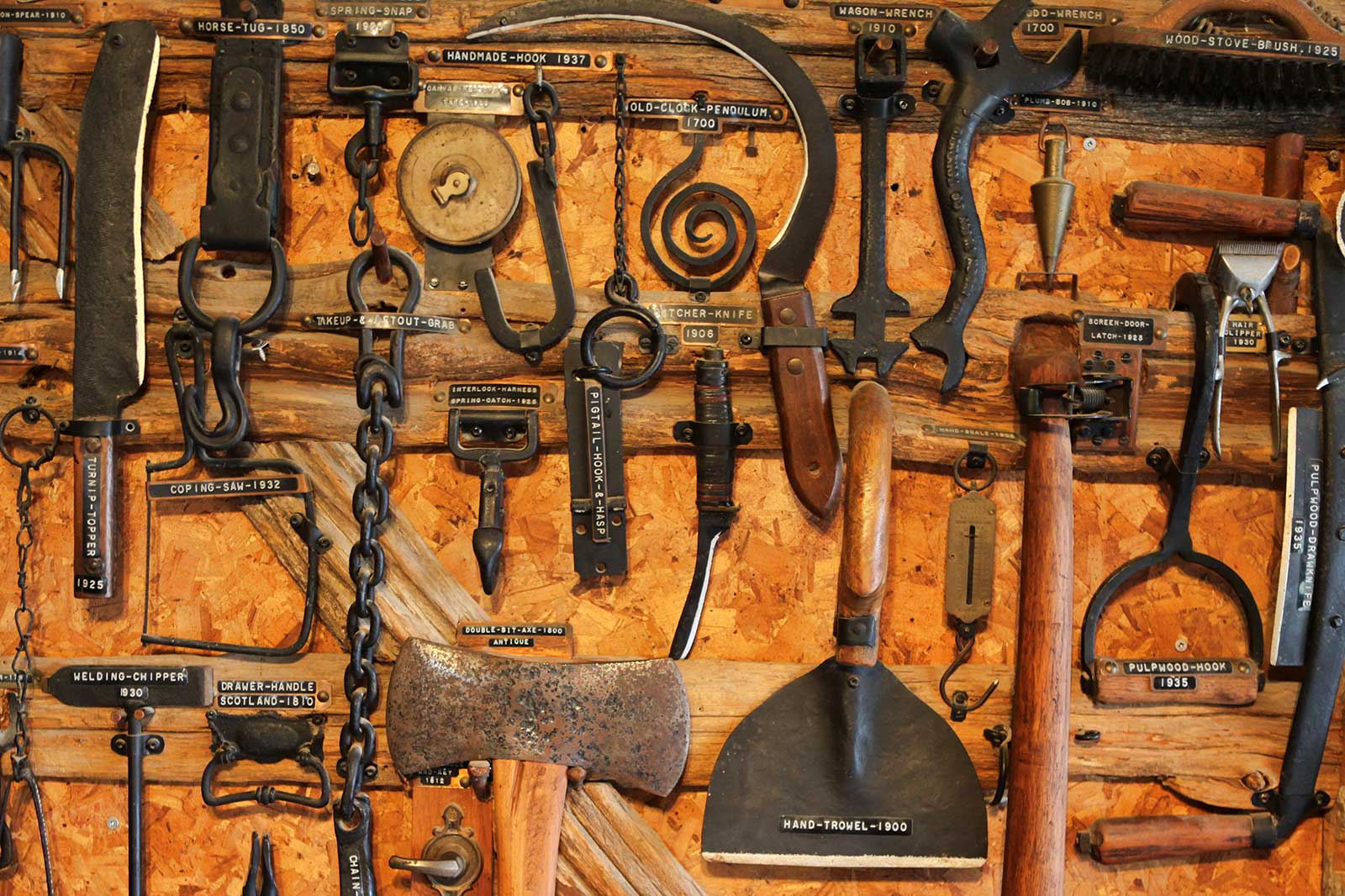
A COLLECTORS GUIDE TO ANTIQUE AND VINTAGE FARM TOOLS
Written by Lew Amicone
For years, antique tools like flails and seed barrows were state-of-the-art technology for farmers. As tools evolved and made some of these implements obsolete, they’ve become hot commodities for collectors.
ANTIQUE FARM TOOLS
Around 9500 B.C.E., humans moved away from hunting and gathering as their primary means of food acquisition. That’s when ancient people began to cultivate grains and domesticate livestock, giving birth to farming. Since that time, tools have been a crucial component of farming success. Even primitive tools like scythes and sickles enabled a dramatic increase in worker productivity. As time passed, humans developed more advanced farming techniques. They invented tools to make their lives easier and to improve farm performance.
In modern times, collectors prize these early tools as relics of a bygone era. Due to the rarity and cultural importance of ancient tools, most collectors (whether out of preference or necessity) steer clear of them. Instead, most collections are filled with tools from the 1700s to the early 1900s. These eras feature plenty of antique tools made from iron, wood, and leather. In many cases, the tools are still usable after some cleaning and sharpening. Even if you don’t intend to use the tools for their original purposes, they still make excellent decorations and conversation pieces.
Most collectors narrow their scope and amass tools that meet particular criteria:
- Purpose-specific tools, such as pitchforks or hand planes
- Era-specific tools, such as those from the American Civil War period
- Manufacturer-specific tools, such as Hedgehog Tools made by Cornelius Whitehouse and Sons
- Hand-crafted tools, made by farmers for their own use
- Material-specific tools, such as those made of iron or wood
In more general terms, collectors often divide farm tools into a few broad categories:
- Hand tools (powered by manual labor), such as shovels, hoes, and pitchforks
- Implements (often powered by livestock or engines), such as haybobs and plows
- Complex machines (usually powered by an engine), such as tractors, balers, and combines
Whether you’re looking to start a tool collection or just learn more about vintage farming techniques, you’ll find plenty of research resources online. In addition, farm tool collecting clubs and organizations can provide information and contact with like-minded folks in your area.
FARM TOOLS FROM YESTERYEAR
Some of the hand tools farmers have used for years are still in use, while others have been replaced by machines that do the same job. Learning the names and uses of these unusual tools is part of the fun of researching antique tools.
- Chaff cutters
- Scythes
- Sickles
- Hoes
- Ditching spades
- Shovels
- Rakes
- Pitchforks
- Dibbers
- Breast ploughs
- Sheep shears
- Potato or beet shovel
- Seed barrow
- Silage knife
- Long-handled slasher
- Turnip chopper
- Pruners
- Bagging hook
- Wooden-handled crook
- Root crop topping knife
- Pea flail
- Malt masher
- Grain sampler
- Wooden oxen yoke
- Barley hummeler
- Post hole borer
- Pig scraper with hook
- Thatcher’s stack bat
- Iron post hammer
- Shepherd’s fold bar
- Reaping or sheaf hook
COLLECTING RESOURCES FOR ANTIQUE AND VINTAGE FARM TOOLS
- The Collector’s Guide to Vintage Gardening Tools: Check out pictures and descriptions of a wide variety of tools that can help you identify tools you’ve found in your research.
- Are These Valuable Old Tools in Your Toolbox? Even if you’re not into collecting for financial gain, it can be interesting to see how some tools are valued.
- Collecting Classic and Vintage Tools: This article explains the names and uses of many less-familiar tools.
- Antique Tools and Unusual Items: Learn more about dozens of truly unusual tools and implements.
- How to Restore Old Tools: This informative article will walk you through some simple techniques for getting your tools back in working order.
- Farm Equipment Repurposing Ideas: If your antique farm tools are too fragile for their original use, try turning them into home or barn décor.
- Handy Farm Devices and How to Make Them: If you want to try your hand at making your own vintage-style tools (or you just want some insight into how handmade tools are crafted), this article is for you.
ANTIQUE TOOL COLLECTING CLUBS AND ORGANIZATIONS
- Collectors of Rare and Familiar Tools Society (CRAFTS)
- Early American Industries Association
- Mid-West Tool Collectors Association
- Davistown Museum

Leave a comment